Selenium Protects ARPE-19 and ACBRI 181 Cells against High Glucose-Induced Oxidative Stress
- PMID: 37630213
- PMCID: PMC10459791
- DOI: 10.3390/molecules28165961
Selenium Protects ARPE-19 and ACBRI 181 Cells against High Glucose-Induced Oxidative Stress
Abstract
Diabetic retinopathy (DR), a complication of diabetes mellitus (DM), can cause severe visual loss. The retinal pigment epithelium (RPE) plays a crucial role in retinal physiology but is vulnerable to oxidative damage. We investigated the protective effects of selenium (Se) on retinal pigment epithelium (ARPE-19) and primary human retinal microvascular endothelial (ACBRI 181) cells against high glucose (HG)-induced oxidative stress and apoptotic cascade. To achieve this objective, we utilized varying concentrations of D-glucose (ranging from 5 to 80 mM) to induce the HG model. HG-induced oxidative stress in ARPE-19 and ACBRI 181 cells and the apoptotic cascade were evaluated by determining Ca2+ overload, mitochondrial membrane depolarization, caspase-3/-9 activation, intracellular reactive oxygen species (ROS), lipid peroxidation (LP), glutathione (GSH), glutathione peroxidase (GSH-Px), vascular endothelial growth factor (VEGF) and apoptosis levels. A cell viability assay utilizing MTT was conducted to ascertain the optimal concentration of Se to be employed. The quantification of MTT, ROS, VEGF levels, and caspase-3 and -9 activation was accomplished using a plate reader. To quantitatively assess LP and GSH levels, GSH-Px activities were utilized by spectrophotometer and apoptosis, mitochondrial membrane depolarization, and the release of Ca2+ from intracellular stores were evaluated by spectrofluorometer. Our investigation revealed a significant augmentation in oxidative stress induced by HG, leading to cellular damage through modulation of mitochondrial membrane potential, ROS levels, and intracellular Ca2+ release. Incubation with Se resulted in a notable reduction in ROS production induced by HG, as well as a reduction in apoptosis and the activation of caspase-3 and -9. Additionally, Se incubation led to decreased levels of VEGF and LP while concurrently increasing levels of GSH and GSH-Px. The findings from this study strongly suggest that Se exerts a protective effect on ARPE-19 and ACBRI 181 cells against HG-induced oxidative stress and apoptosis. This protective mechanism is partially mediated through the intracellular Ca2+ signaling pathway.
Keywords: ARPE-19 cells; high glucose; oxidative stress; selenium.
Conflict of interest statement
The authors declare no conflict of interest.
Figures


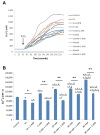
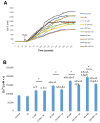

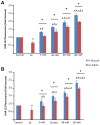
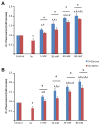
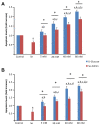

Similar articles
-
Polygonatum sibiricum polysaccharide inhibits high glucose-induced oxidative stress, inflammatory response, and apoptosis in RPE cells.J Recept Signal Transduct Res. 2022 Apr;42(2):189-196. doi: 10.1080/10799893.2021.1883061. Epub 2021 Feb 8. J Recept Signal Transduct Res. 2022. PMID: 33554697
-
Melatonin and amfenac modulate calcium entry, apoptosis, and oxidative stress in ARPE-19 cell culture exposed to blue light irradiation (405 nm).Eye (Lond). 2014 Jun;28(6):752-60. doi: 10.1038/eye.2014.50. Epub 2014 Mar 7. Eye (Lond). 2014. PMID: 24603419 Free PMC article.
-
The Protective Role of Selenium on Scopolamine-Induced Memory Impairment, Oxidative Stress, and Apoptosis in Aged Rats: The Involvement of TRPM2 and TRPV1 Channels.Mol Neurobiol. 2017 May;54(4):2852-2868. doi: 10.1007/s12035-016-9835-0. Epub 2016 Mar 28. Mol Neurobiol. 2017. PMID: 27021021
-
Modulation of Diabetes-Induced Oxidative Stress, Apoptosis, and Ca2+ Entry Through TRPM2 and TRPV1 Channels in Dorsal Root Ganglion and Hippocampus of Diabetic Rats by Melatonin and Selenium.Mol Neurobiol. 2017 Apr;54(3):2345-2360. doi: 10.1007/s12035-016-9727-3. Epub 2016 Mar 9. Mol Neurobiol. 2017. PMID: 26957303
-
Protective effects of melatonin and memantine in human retinal pigment epithelium (ARPE-19) cells against 2-ethylpyridine-induced oxidative stress: implications for age-related macular degeneration.Cutan Ocul Toxicol. 2018 Jun;37(2):112-120. doi: 10.1080/15569527.2017.1354218. Epub 2017 Aug 3. Cutan Ocul Toxicol. 2018. PMID: 28707481
Cited by
-
Stage-dependent proteomic alterations in aqueous humor of diabetic retinopathy patients based on data-independent acquisition and parallel reaction monitoring.J Transl Med. 2025 Apr 25;23(1):476. doi: 10.1186/s12967-025-06452-z. J Transl Med. 2025. PMID: 40281624 Free PMC article.
-
Study of the efficacy and the mechanism of action of lanreotide for the treatment of persistent diabetic macular edema.Sci Rep. 2025 Mar 17;15(1):9157. doi: 10.1038/s41598-025-93844-2. Sci Rep. 2025. PMID: 40097526 Free PMC article.
-
Buspirone Enhances Cell Survival and Preserves Structural Integrity during Oxidative Injury to the Retinal Pigment Epithelium.Antioxidants (Basel). 2023 Dec 17;12(12):2129. doi: 10.3390/antiox12122129. Antioxidants (Basel). 2023. PMID: 38136248 Free PMC article.
-
Association between serum heavy metal levels and diabetic retinopathy in NHANES 2011-2020.Sci Rep. 2024 Jan 13;14(1):1268. doi: 10.1038/s41598-024-51749-6. Sci Rep. 2024. PMID: 38218955 Free PMC article.
-
Targeting oxidative stress in diabetic retinopathy: mechanisms, pathology, and novel treatment approaches.Front Immunol. 2025 Jun 16;16:1571576. doi: 10.3389/fimmu.2025.1571576. eCollection 2025. Front Immunol. 2025. PMID: 40589740 Free PMC article. Review.
References
-
- Flaxman S.R., Bourne R.R.A., Resnikoff S., Ackland P., Braithwaite T., Cicinelli M.V., Das A., Jonas J.B., Keeffe J., Kempen J.H., et al. Global causes of blindness and distance vision impairment 1990–2020: A systematic review and meta-analysis. Lancet Glob. Health. 2017;5:e1221–e1234. doi: 10.1016/S2214-109X(17)30393-5. - DOI - PubMed
-
- Shivarudrappa A.H., Ponesakki G. Lutein reverses hyperglycemia-mediated blockage of Nrf2 translocation by modulating the activation of intracellular protein kinases in retinal pigment epithelial (ARPE-19) cells. J. Cell Commun. Signal. 2020;14:207–221. doi: 10.1007/s12079-019-00539-1. - DOI - PMC - PubMed
-
- Tenconi P.E., Bermúdez V., Oresti G.M., Giusto N.M., Salvador G.A., Mateos M.V. High glucose-induced phospholipase D activity in retinal pigment epithelium cells: New insights into the molecular mechanisms of diabetic retinopathy. Exp. Eye Res. 2019;184:243–257. doi: 10.1016/j.exer.2019.04.028. - DOI - PubMed
-
- Zhang Y., Xi X., Mei Y., Zhao X., Zhou L., Ma M., Liu S., Zha X., Yang Y. High-glucose induces retinal pigment epithelium mitochondrial pathways of apoptosis and inhibits mitophagy by regulating ROS/PINK1/Parkin signal pathway. Biomed. Pharmacother. 2019;111:1315–1325. doi: 10.1016/j.biopha.2019.01.034. - DOI - PubMed
MeSH terms
Substances
LinkOut - more resources
Full Text Sources
Research Materials
Miscellaneous

